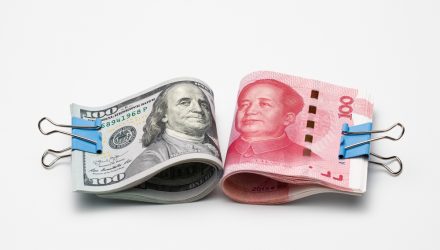China is the world’s second-largest economy and by far the largest developing market. As such, many investors quickly assume that financial markets there are highly correlated to those in the U.S. and other emerging markets.
Data suggest otherwise. In fact, some markets are highlighting decoupling of Chinese equity bourses this year, indicating that there could be opportunity with exchange traded funds such as the KraneShares MSCI All China Index ETF (KALL). Up nearly 6% year-to-date, KALL is already showing some viability as a decoupling play.
That’s an important point at a time when advisors and investors are scouring financial markets for assets sporting reduced correlations to domestic equities.
“While many developed and emerging stock market indices have traded more in sync since the onset of the COVID-19 pandemic, China has performed differently, with both domestic China A-shares and offshore-listed China equities decoupling in comparison to developed and emerging markets,” noted S&P Dow Jones Indices. “The current market environment of China easing COVID-19 restrictions, while the world grapples with higher inflation and rising rates, has resulted in further variance in equity market returns.”
S&P pointed out that the elevated variance sported by Chinese stocks holds true across mainland-listed names as well as those equities trading on offshore bourses. That’s pertinent to investors evaluating KALL because the ETF follows the MSCI China All Shares Index. That benchmark is a collection of Chinese stocks trading in Hong Kong, mainland China, and in the U.S.
Further enhancing the appeal of KALL for tactical investors is that adding Chinese stocks to a portfolio doesn’t necessarily mean a noticeable uptick in volatility. Actually, that move can have the opposite effect.
“One may think adding more volatile assets such as China or emerging market equities to a developed or U.S. equity portfolio would increase risk. However, given the low correlations, the optimal portfolio mix may actually reduce risk,” according to S&P.
That’s likely surprising to many market participants that instinctively assume that Chinese stocks are significantly more volatile than domestic counterparts and broader emerging markets benchmarks.
KALL holds 248 stocks, 23.61% of which hail from the consumer discretionary sector. While that may imply the potential for elevated volatility, that is somewhat muted by a combined allocation of more than 32% to the financial services and consumer staples sectors. The bulk of KALL’s most prominent holdings are large-cap names, indicating that investors are making a bet on smaller, more speculative stocks with this ETF.
For more news, information, and analysis, visit the China Insights Channel.
The opinions and forecasts expressed herein are solely those of Tom Lydon, and may not actually come to pass. Information on this site should not be used or construed as an offer to sell, a solicitation of an offer to buy, or a recommendation for any product.

